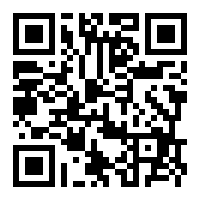PENGUJIAN USABILITY WEBSITE DOKUMENTASI MENGGUNAKAN SYSTEM USABILITY SCALE (SUS)
Keywords:
SUS, Tailwind CSS, Usability, WebsiteAbstract
Documentation websites are a means for programmers to find solutions to the problems they face. Documentation websites that generally provide detailed information regarding how to use a particular framework. The documentation website used in this research is the documentation website from Tailwind CSS. Tailwind CSS is a CSS framework that has a utility-based component principle. With these principles, the website development process will be shorter, more flexible, responsive, and use code more efficiently. However, the convenience provided forces writing CSS code to be inline-CSS. This results in confusion arising from website programmers regarding CSS terms that are changed by Tailwind CSS. The Tailwind CSS website, which provides information related to the Tailwind CSS framework documentation, is in practice less intuitive, making it difficult for novice programmers to find solutions to the problems they face. This research aims to determine the usability of the Tailwind CSS website, from a student's perspective. The method used in this journal is SUS which is carried out by asking 10 questions related to the Tailwind CSS website to 30 respondents consisting of 87% men and 13% women. The selected respondents were students majoring in technology who used the documentation website from Tailwind CSS. The results of this research found that the Tailwind CSS website received a score of 70 on the SUS and could be categorized as Grade C or Fair.
References
R. D. Prasetya, F. M. Khairy, N. Hibban, D. B. Rifa’i, and R. I. Pasya, “Pengujian Usability Pada Website Kitabisa.Com Menggunakan Metode System Usability Scale (Sus),” METHODIKA: Jurnal Teknik Informatika dan Sistem Informasi, vol. 9, no. 2, pp. 26–29, Sep. 2023, doi: 10.46880/mtk.v9i2.1942.
J. R. Permana, M. Muhaqiqin, and A. S. Puspaningrum, “Implementasi Metodologi Web Development Life Cycle Untuk Membangun Sistem Perpustakaan Berbasis Web (Studi Kasus: Man 1 Lampung Tengah),” Jurnal Informatika dan Rekayasa Perangkat Lunak, vol. 2, no. 4, pp. 435–446, 2021, doi: 10.33365/jatika.v2i4.1407.
J. Moffett, “Why HTML and CSS?,” in Bridging UX and Web Development, J. B. T.-B. U. X. and W. D. Moffett, Ed., Boston: Morgan Kaufmann, 2014, pp. 55–61. doi: 10.1016/b978-0-12-420245-0.00004-3.
H. Al Salmi, “Comparative CSS frameworks,” Multi-Knowledge Electronic Comprehensive Journal for Education and Science Publications (MECSJ), no. 66, 2023.
F. Rifandi, Tri Viqi Adriansyah, and Rina Kurniawati, “Website Gallery Development Using Tailwind CSS Framework,” Jurnal E-Komtek (Elektro-Komputer-Teknik), vol. 6, no. 2, pp. 205–214, 2022, doi: 10.37339/e-komtek.v6i2.937.
S. Azhariyah and Muhammad Mukhlis, “Framework CSS: Tailwind CSS Untuk Front-End Website Store PT. XYZ,” Jurnal Informatika, vol. 3, no. 1, pp. 30–36, Apr. 2024, doi: 10.57094/ji.v3i1.1601.
A. M. Suiter and H. L. Moulaison, “Supporting Scholars: An Analysis of Academic Library Websites’ Documentation on Metrics and Impact,” Journal of Academic Librarianship, vol. 41, no. 6, pp. 814–820, 2015, doi: 10.1016/j.acalib.2015.09.004.
A. Nissen, R. Riedl, and R. Schütte, “Users’ reactions to website designs: A neuroimaging study based on evolutionary psychology with a focus on color and button shape,” Comput Human Behav, vol. 155, p. 108168, 2024, doi: 10.1016/j.chb.2024.108168.
C. Gala, “The Importance of Usability,” Medium.com, vol. 13, no. September 2017, p. 2017, 2017, [Online]. Available: https://medium.com/adalab/the-importance-of-usability-10e9871a16d8
P. Vlachogianni and N. Tselios, “Perceived Usability Evaluation of Educational Technology Using the Post-Study System Usability Questionnaire (PSSUQ): A Systematic Review,” Sustainability (Switzerland), vol. 15, no. 17, pp. 392–409, 2023, doi: 10.3390/su151712954.
A. I. Martins, A. F. Rosa, A. Queirós, A. Silva, and N. P. Rocha, “European Portuguese Validation of the System Usability Scale (SUS),” Procedia Comput Sci, vol. 67, pp. 293–300, 2015, doi: 10.1016/j.procs.2015.09.273.
V. Raju and N. S. Harinarayana, “Online survey tools: A case study of Google Forms,” in Scientific, Computational & Information Research Trends in Engineering, 2016, p. 1. [Online]. Available: https://www.researchgate.net/publication/326831738
S. O. Ose, “Using Excel and Word to Structure Qualitative Data,” J Appl Soc Sci (Boulder), vol. 10, no. 2, pp. 147–162, 2016, doi: 10.1177/1936724416664948.
J. Chen, “Impacts of Internet literacy and Internet contact on the communication effect of university students’ ideological and political education in China,” Acta Psychol (Amst), vol. 247, p. 104321, 2024, doi: 10.1016/j.actpsy.2024.104321.
A. Miniukovich, S. Sulpizio, and A. De Angeli, “Visual complexity of graphical user interfaces,” in Proceedings of the Workshop on Advanced Visual Interfaces AVI, in AVI ’18. New York, NY, USA: Association for Computing Machinery, 2018. doi: 10.1145/3206505.3206549.
A. H. Aubert, S. Schmid, and J. Lienert, “Can online interfaces enhance learning for public decision-making? Eliciting citizens’ preferences for multicriteria decision analysis,” Eur J Oper Res, vol. 314, no. 2, pp. 760–775, 2024, doi: 10.1016/j.ejor.2023.10.031.
F. Ferreira, H. S. Borges, and M. T. Valente, “Refactoring react-based Web apps,” Journal of Systems and Software, vol. 215, p. 112105, 2024, doi: https://doi.org/10.1016/j.jss.2024.112105.
Downloads
Published
How to Cite
Issue
Section
License
Copyright (c) 2024 Fathiyah Nopriani, Maulana Asykari Muhammad

This work is licensed under a Creative Commons Attribution 4.0 International License.











